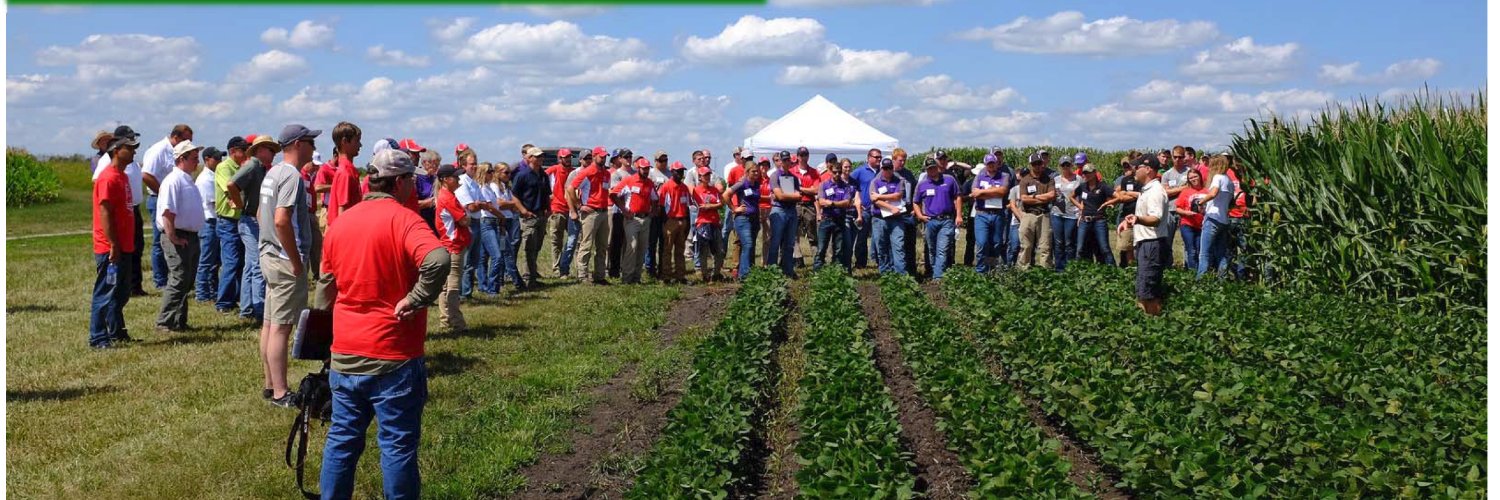
North Central Weed Science Society
@NCWeedScience
We are professionals interested in weed science from many perspectives.
I’ll sign off with the find of the day. Adult killdeer are always yelling at us when rating plots, but rarely do we see the babies. Small waterhemp for scale. Thanks for following along this week.

We are proud of the Weed Science tradition here at NDSU. Faculty and alumni have served as president of NCWSS 10 times. John Nalewaja was first in 1979. Current President Elect Brett Miller will be number 11. Years: 1979 1985 1996 2001 2002 2005 2006 2007 2017 2021

This morning we hosted a group of students from regional state colleges for a soils, insects, diseases, and weeds field day. We used our Herbicide ID plots to discuss symptomology and site of action. Doubled as a practice run for the contest next week.



Waterhemp is one of the top weed issues in southeastern ND. Planned 2-pass programs provide excellent control for most soybean acres. We’ll be investigating resistance to atrazine and Group 27 this winter. Atrazine caused more injury to our soybean than waterhemp in picture 3.



Find of the day: variegated waterhemp!



We’re working with a common ragweed population with resistance to Groups 2, 9, and 14. Metribuzin was one of the few effective PRE herbicides in soybean.


Dr. Harlene Hatterman-Valenti was evaluating potato and onion trials in Oakes, ND today. Currently evaluating different rates and timing of flumioxazin in potato, and delayed PRE of Pendimethalin fb POST herbicides in onion. Some oxyflurofen injury this year in onion.



A few of the specimens from this morning.




We’re in Minot this morning for the North Central REC Field Day. Dr. Brian Jenks and his team always start the morning with a weed ID clinic. Over 100 weeds on display today.


We conduct a lot of research on waterhemp. But several research sites do not have a waterhemp problem yet. So we hand pull plants this time of year. Always try to lay the plant across a standing soybean row to prevent reestablishment.

Rating season is winding down, but still evaluating injury on some dry bean trials. Group 15 tank-mixes applied POST on navy bean in this trial. Plants have recovered from initial injury, but still some hints of injury in picture on the right (hotter tank-mix).


Evaluating adjuvant trials today. We typically plant crops, then spray them with cut rates of herbicides. Most trials are teasing out small differences. Some trials have stark differences. First picture is a Group 14 with no adjuvant, second picture is same product with MSO.


This evening’s field day was at our Agronomy Research Farm in Casselton, which is celebrating its 75th year. This farm has been important for the Foundation seed program for many of our crops. Weeds discussed were waterhemp, green foxtail, common ragweed, and volunteer canola.



Part of the Field Day circuit brings us through Theodore Roosevelt National Park. Most people enjoy the landscape of the Badlands, but peek over the wall and you’ll see kochia and green foxtail lining the roadside. Two of our top weeds in rows crops.



We’re in North Dakota this week (@NDSUWeeds). It’s Field Day season, so a lot of time on the road last week and this week traveling to our Research Extension Centers. Kochia is our top weed across the state, and sometimes it even impresses our Pathologists (@NDSUcerealpath).

Well, my week of hosting this handle has come to an end! Hope folks enjoyed it and learned some about what I do as a Field Market Development Specialist working @ValentUSA. Feel free to check out my regular account over at @nozzle_jockey
Had to jump back down to NW MO today to check out some waterhemp plots. Lots of studies I do aren't even in crops, like this one. Some are done this way to better study the treatment efficacy. Others are to control winter weeds or terminate cover crops or in industrial areas.
